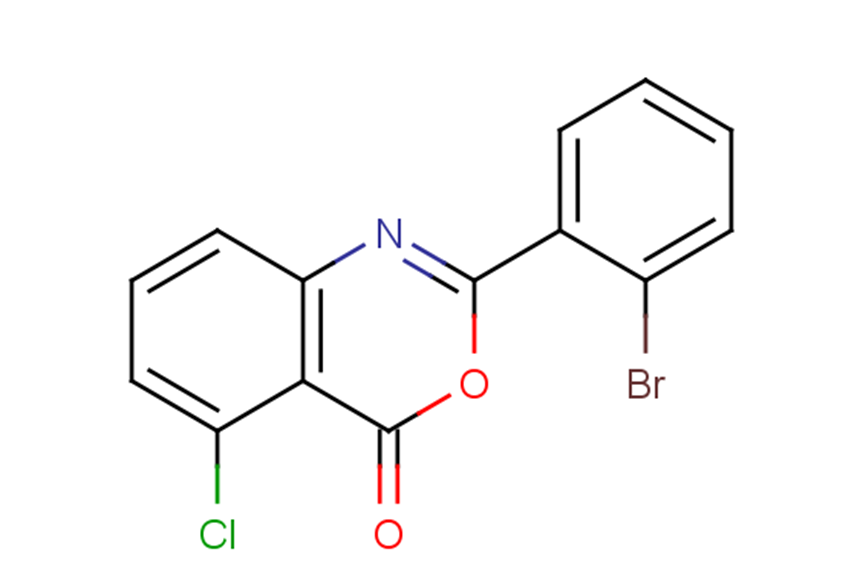
2-(2-bromophenyl)-5-chloro-4H-3,1-benzoxazin-4-one
CAS No. 1234707-32-4
2-(2-bromophenyl)-5-chloro-4H-3,1-benzoxazin-4-one( —— )
Catalog No. M22210 CAS No. 1234707-32-4
2-(2-bromophenyl)-5-chloro-4H-3,1-benzoxazin-4-one is an human neutrophil elastase inhibitor.
Purity : >98% (HPLC)
 COA
COA
 Datasheet
Datasheet
 HNMR
HNMR
 HPLC
HPLC
 MSDS
MSDS
 Handing Instructions
Handing Instructions
| Size | Price / USD | Stock | Quantity |
| 2MG | 178 | In Stock |


|
| 5MG | 268 | In Stock |


|
| 10MG | 408 | In Stock |


|
| 25MG | 672 | In Stock |


|
| 50MG | 945 | In Stock |


|
| 100MG | 1278 | In Stock |


|
| 500MG | 2547 | In Stock |


|
| 1G | Get Quote | In Stock |


|
Biological Information
-
Product Name2-(2-bromophenyl)-5-chloro-4H-3,1-benzoxazin-4-one
-
NoteResearch use only, not for human use.
-
Brief Description2-(2-bromophenyl)-5-chloro-4H-3,1-benzoxazin-4-one is an human neutrophil elastase inhibitor.
-
Description2-(2-bromophenyl)-5-chloro-4H-3,1-benzoxazin-4-one is an human neutrophil elastase inhibitor.
-
In Vitro——
-
In Vivo——
-
Synonyms——
-
PathwayOthers
-
TargetOther Targets
-
RecptorNeutrophil elastase (human)
-
Research Area——
-
Indication——
Chemical Information
-
CAS Number1234707-32-4
-
Formula Weight336.57
-
Molecular FormulaC14H7BrClNO2
-
Purity>98% (HPLC)
-
Solubility——
-
SMILESClc1cccc2nc(oc(=O)c12)-c1ccccc1Br
-
Chemical Name——
Shipping & Storage Information
-
Storage(-20℃)
-
ShippingWith Ice Pack
-
Stability≥ 2 years
Reference
molnova catalog



related products
-
Biotin-[Tyr0]-Orexin...
Biotin-[Tyr0]-Orexin B, mouse, rat
-
Methyl 4-caffeoylqui...
Methyl 4-caffeoylquinate is a natural product for research related to life sciences.
-
3-Phenylpropyl isoth...
3-Phenylpropyl isothiocyanate has a stronger inhibitory effect on N-nitrosomethyl-benzylamine (NMBA) tumorigenesis. 3-Phenylpropyl isothiocyanate has chemopreventive effects.



 Cart
Cart
 sales@molnova.com
sales@molnova.com


